Eugene M. Frandzen painted the covers of Sky Fighters from its first issue in 1932 until he moved on from the pulps in 1939. At this point in the run, the covers were about the planes featured on the cover more than the story depicted. For the December 1935 cover, Mr. Frandzen features the Italian S.V.A. bringing loaves of bread to the troops high in the mountain passes!
The Ships on the Cover
BREAD! The mainstay of mankind. 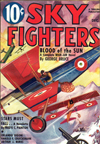 And when the army is the mainstay of nations, bread for the army ranks higher than Roman Emperors.
And when the army is the mainstay of nations, bread for the army ranks higher than Roman Emperors.
Who said an army fights on its stomach? Someone who did plenty of fighting in the old days and knew his armies. Of what importance were guns, bombs, and shells piled up ready for combat when the human bodies to man these weapons of war have no fuel to stoke the human engine!
The chuck wagon was greeted by loud cheers when it put in its appearance in “any man’s army.” Runners with food supplies strapped to their backs dodged bullets through a maze of communication trenches to get to the front line doughboys. Dogs pulling small carts of food got through to scattered outposts.
The Alpine Heights
Italy has a wonderful northern barrier which nature has seemingly bestowed upon that sunny boot projecting into the Mediterranean. When Italy declared war on the Austrian Empire in May, 1915, she looked hopefully at those lofty Alpine heights to keep her enemy in check.
The Italian advance of early days was halted. The Austrian counter-attack regained their positions but in 1917 when Italy finally declared war on Germany also, the Italians resumed their offensive and captured fourteen fortified mountains.
It is a different problem to fight on mountain sides than on the fields of the lowlands. The ordinary labor of warfare is made a hundredfold more difficult. Dragging heavy guns up rocky mountain sides by sheer nerve-racking will power—pulling shells on sleds over icy passes—stringing communication lines from crag to crag, where one well-placed shell would damage the patient work of days of laying the wires.
The contact, broken in some out of the way pass, impossible to mend without disastrous delay. All these had to be done on the ground. The only savior of these lonely mountain outposts was the new weapon of the world war—the airplane.
Italy, from poor beginnings, progressed Steadily forward in the aviation branch of her service despite her ground army’s advances or retreats. Planes could fly from their bases on flat ground to the besieged mountain country to drop messages keeping the army in touch with headquarters no matter how many communication lines on the ground were destroyed.
Flying high over such a wide expanse of territory they observed the enemy positions, often saving their own forces from being bottled up by enemy flanking movements.
But as important as any message to the morale of these men high in snow-covered fastnesses was the sight which is shown on the cover picture. Planes bringing the white-clad figures on the mountain side that which they could obtain by no other means—Bread! Big round, crispy loaves of the life-giving food.
The pass through which the guns and ammunition have been hauled was later completely buried under an avalanche, tons of snow and rock blocked the narrow road.

When Men Hunger
Days, weeks, months might elapse before that impassable barrier could be surmounted to transport food to the men cut off from their fellows. But four planes received their orders and cargo. They were in sight of the desperate little group in a few hours time. Sleek S.V.A.’s that could climb high above the loftiest peaks, their powerful Ansaldo engines overcoming the barrier that nature had created against the Italians as well as in their favor.
Shouts of “Bravo” from the snow. Shouts that would warm the heart of an opera star at the Milan Opera House. These cheers were for something better than music when men are hungry. They were for contents of the rope bags falling from the planes, the golden brown loaves of bread.

Sky Fighters, Deecmber 1935 by Eugene M. Frandzen
(The Ships on The Cover Page)
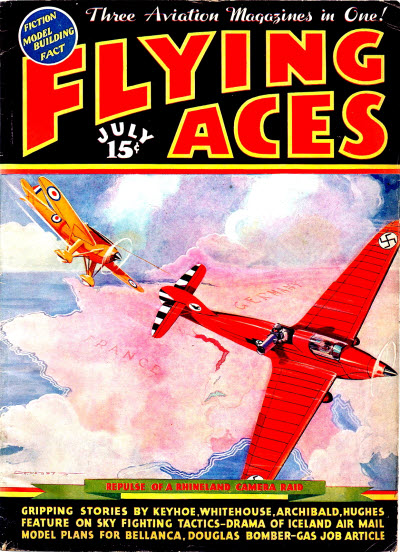 That sound can only mean one thing—it’s time to ring out the old year and ring in the new with that Bachelor of Artifice, Knight of Calamity and an alumnus of Doctor Merlin’s Camelot College for Conjurors—Phineas Pinkham.
That sound can only mean one thing—it’s time to ring out the old year and ring in the new with that Bachelor of Artifice, Knight of Calamity and an alumnus of Doctor Merlin’s Camelot College for Conjurors—Phineas Pinkham. 




 most brilliant and scintillating of all the flying aces. Most everyone knows that Captains Brumoninski and Linke were the ranking Austrian flyers and carried on a duel for top honors all through the war with first one, then the other, on top. But what most informed people do not know, is that Captain Crawford and Captain Linke were one and the same person! Son of an English father and an Austrian mother, Linke Crawford was born and raised in gay Vienna. When he began to win fame as a fighting pilot he had dropped the Crawford part of his name and was known as Captain Linke. although he was listed on the army rolls as Captain Crawford. He fell victim finally under the guns of Colonel Barker, famous Canadian ace. Up to that time, however, he had scored 27 victories and won all the awards possible from his country. The story below is taken from the archives of the Austrian Imperial Air Corps in Vienna.
most brilliant and scintillating of all the flying aces. Most everyone knows that Captains Brumoninski and Linke were the ranking Austrian flyers and carried on a duel for top honors all through the war with first one, then the other, on top. But what most informed people do not know, is that Captain Crawford and Captain Linke were one and the same person! Son of an English father and an Austrian mother, Linke Crawford was born and raised in gay Vienna. When he began to win fame as a fighting pilot he had dropped the Crawford part of his name and was known as Captain Linke. although he was listed on the army rolls as Captain Crawford. He fell victim finally under the guns of Colonel Barker, famous Canadian ace. Up to that time, however, he had scored 27 victories and won all the awards possible from his country. The story below is taken from the archives of the Austrian Imperial Air Corps in Vienna.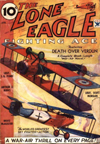
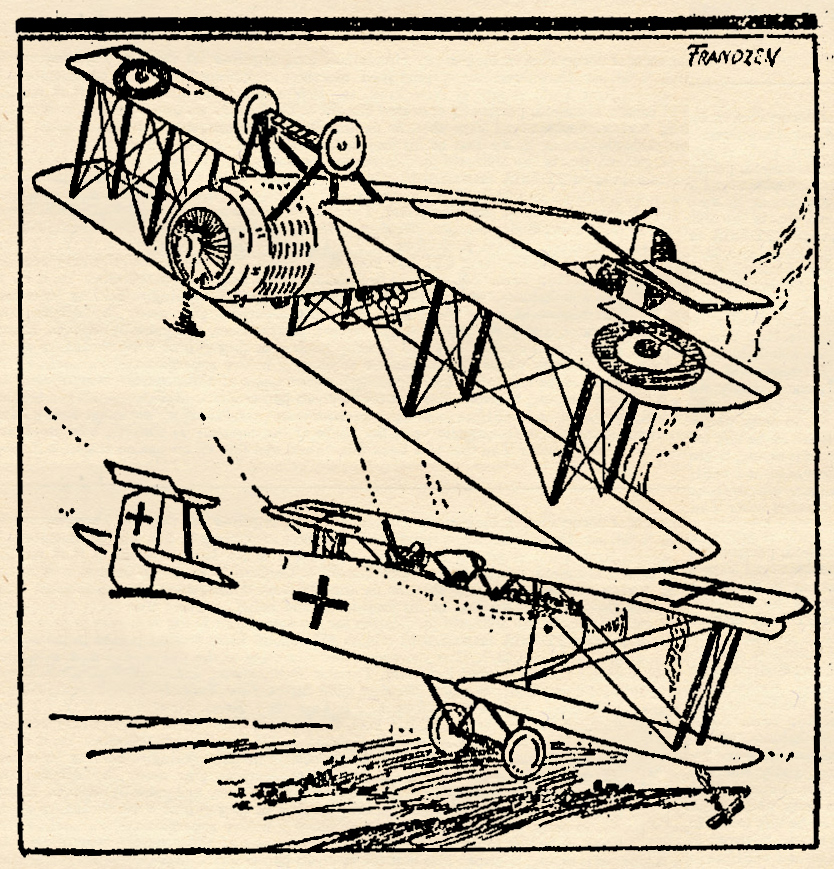
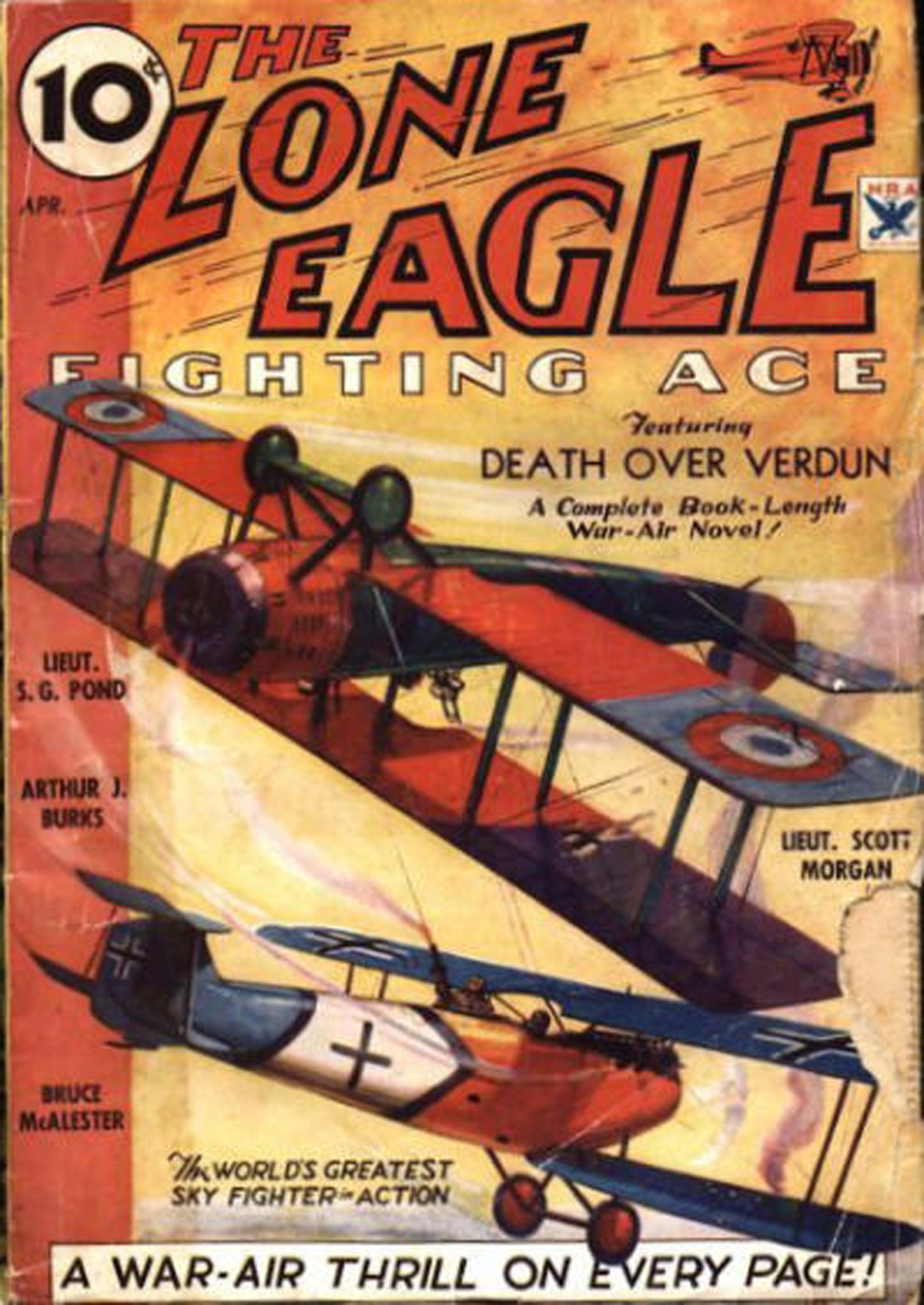
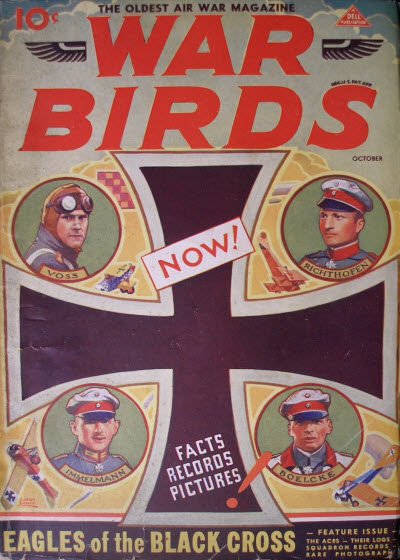 a story from the pen of a prolific pulp author O.B. Myers! Myers was a pilot himself, flying with the 147th Aero Squadron and carrying two credited victories and awarded the
a story from the pen of a prolific pulp author O.B. Myers! Myers was a pilot himself, flying with the 147th Aero Squadron and carrying two credited victories and awarded the 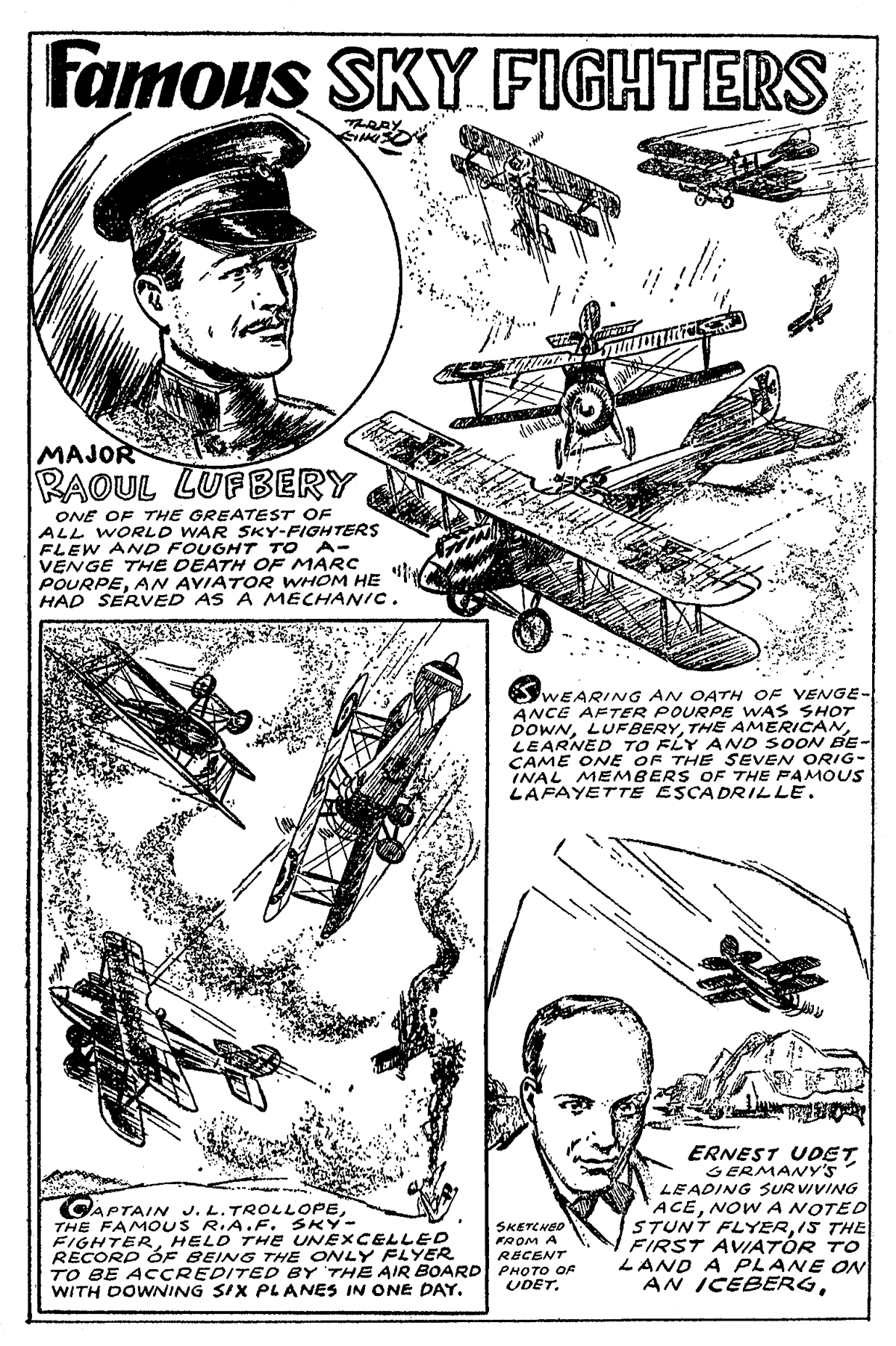
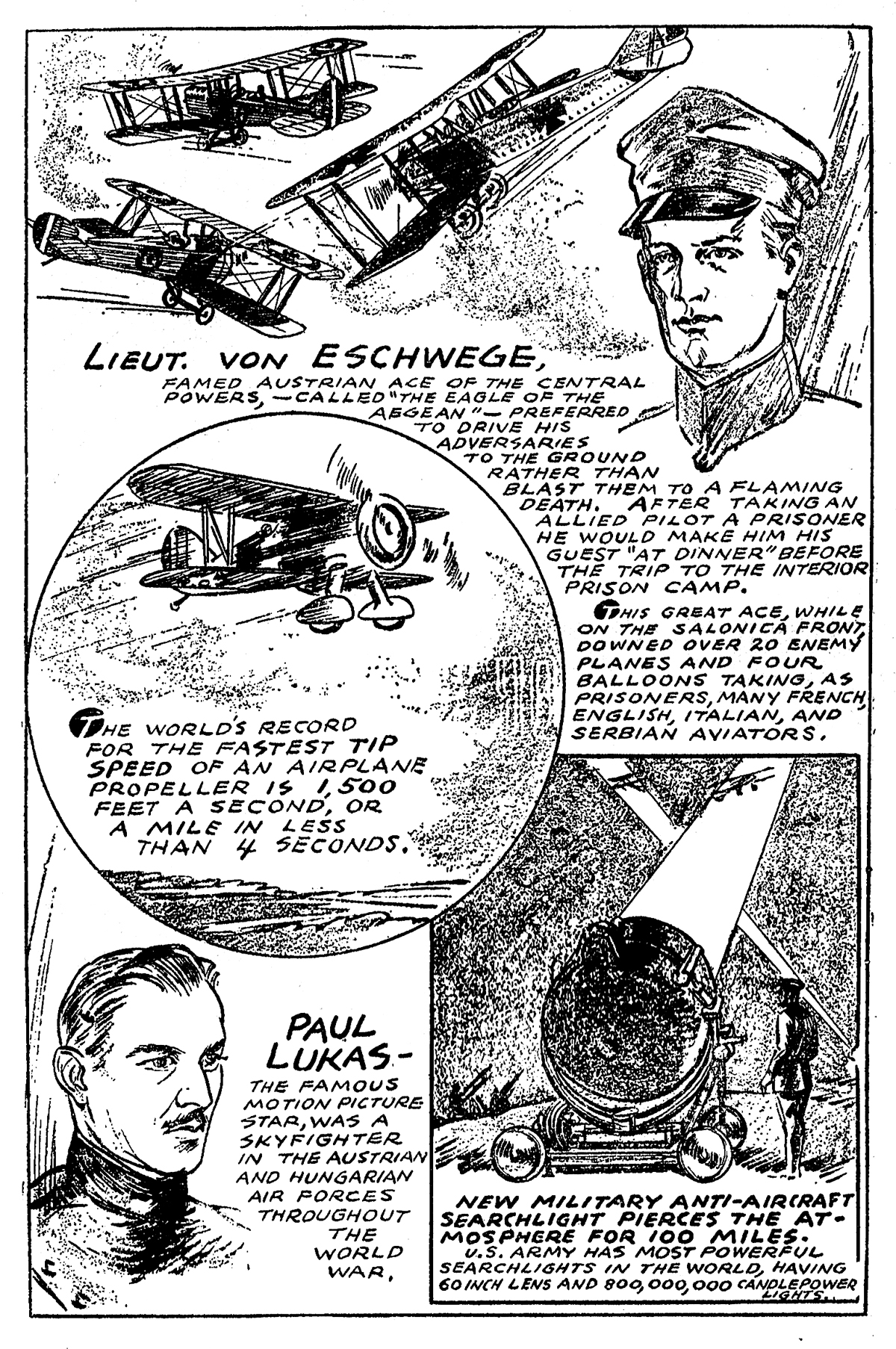



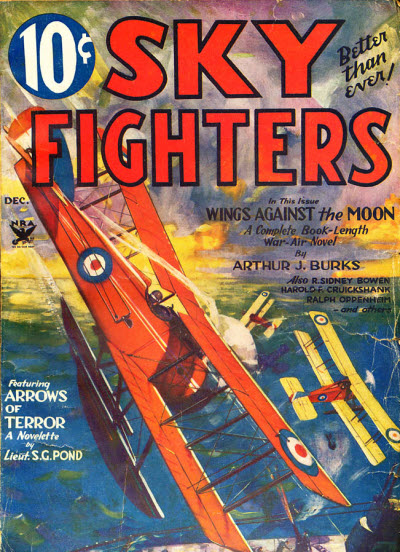 great story from the pen of Ralph Oppenheim. Best known in these parts for
great story from the pen of Ralph Oppenheim. Best known in these parts for 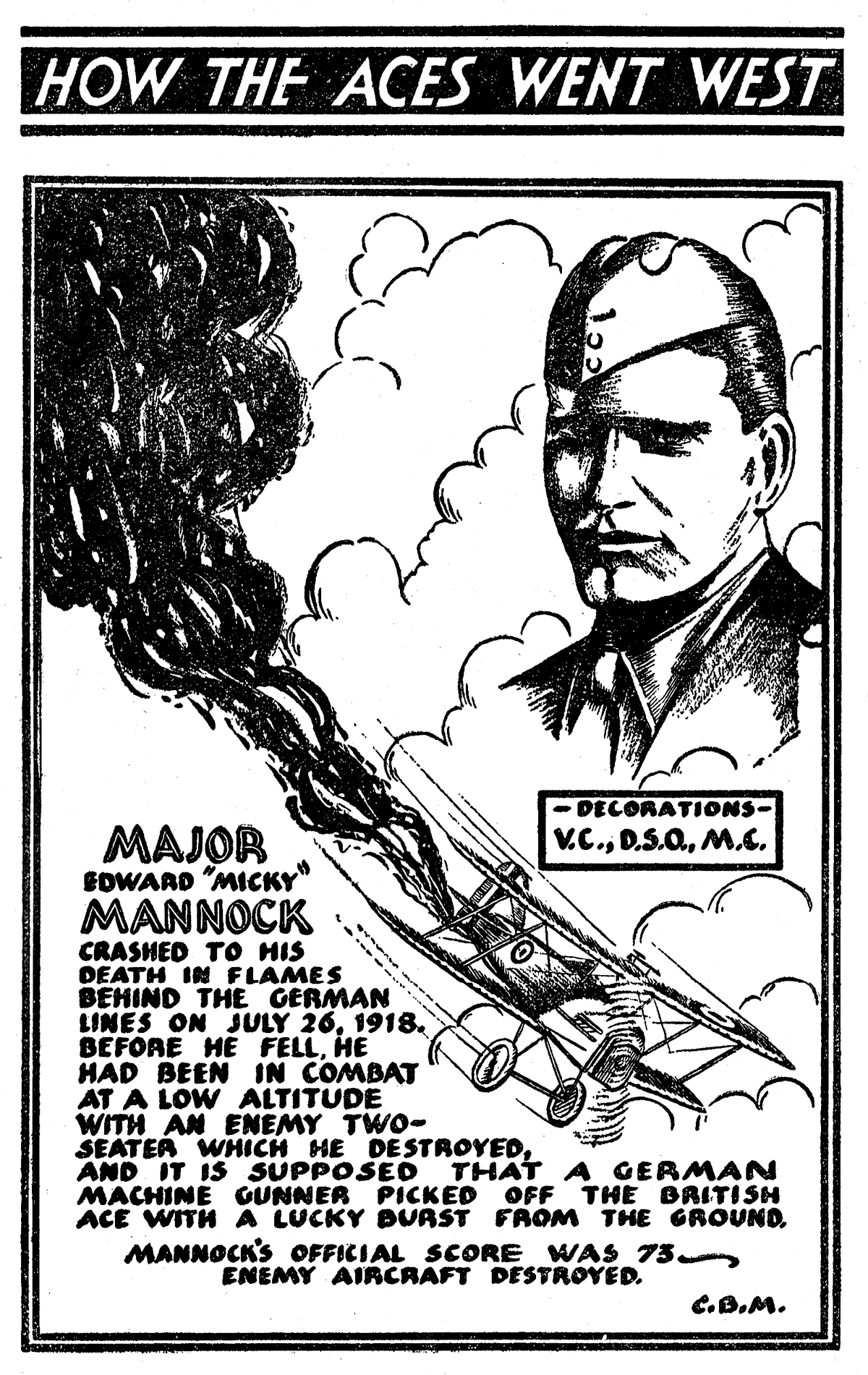
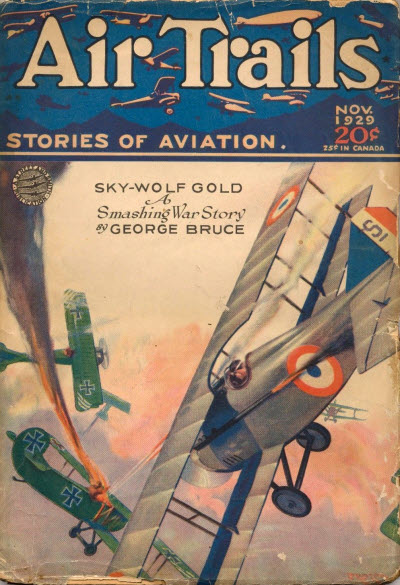 exciting air adventure with Rusty Wade from the pen of Frank Richardson Pierce. Pierce is probably best remembered for his prolific career in the Western Pulps. Writing under his own name as well as two pen names—Erle Stanly Pierce and Seth Ranger—Pierce’s career spanned fifty years and produced over 1,500 short stories, with over a thousand of these appearing in the pages of Argosy and the Saturday Evening Post.
exciting air adventure with Rusty Wade from the pen of Frank Richardson Pierce. Pierce is probably best remembered for his prolific career in the Western Pulps. Writing under his own name as well as two pen names—Erle Stanly Pierce and Seth Ranger—Pierce’s career spanned fifty years and produced over 1,500 short stories, with over a thousand of these appearing in the pages of Argosy and the Saturday Evening Post.